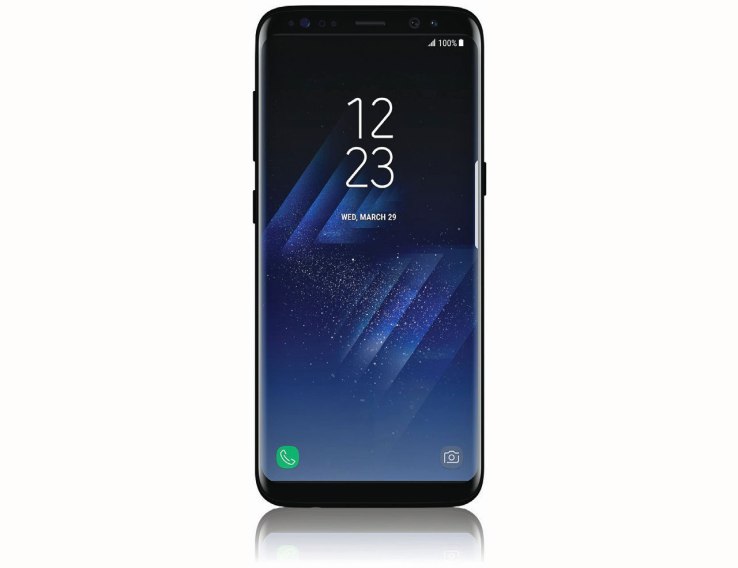

Next week in New York, Samsung will finally reveal the Galaxy S8. The handset has a lot riding on it — not simply because it’s a brand-defining flagship from one of the biggest names in the business or because the company seems to have delayed it quite a bit as it’s worked to get things right. Next week’s Unpacked event will have even wider ranging implications for Samsung as its first major phone announcement since last year’s Galaxy Note debacle left a serious scar on the brand for many consumers.
Samsung has been happily hyping the announcement for quite a while. In fact, the date of the event itself was a big reveal at an otherwise lackluster Mobile World Congress press conference that was focused on a pair of new tablets. In the intervening weeks, our picture of the S8 has become pretty fully formed, both through official announcements from the company and a number of seemingly legit leaks that it — whether intended or otherwise — hasn’t done a great job keeping under control.
Expect the kick-off to Wednesday’s event to once again strike a tone somewhere between somber and excited that will likely be the last major public apology for the Note 7, coupled with some more thorough praising of the company’s recently implemented exacting safety standards. But while other companies may have looked to slow things down a bit, that’s never been Samsung’s way. Expect this to be yet another everything-and-the-kitchen-sink device from the company.
One thing we know for sure, Samsung’s joining the growing chorus of phone manufacturers opting for their own smart assistant — a fact that’s no doubt rubbing Google the wrong way as the Android maker looks to push its own assistant onto more handsets. Last week, Samsung detailed a fair amount about Bixby, confirming a fair bit of what we already knew about the Siri/Alexa/Assistant competitor.
An outgrowth of last years’s acquisition of Viv, the AI promises some intriguing next-generation capabilities, like context awareness of other applications on the phone and a lot of third-party support for other apps that are deemed “Bixby-enabled.” The company also has promised to “remove friction” from the learning process, to help make switching interfaces “seamless and intuitive.”
As for the hardware, the company’s been pushing its “bigger is better” narrative at least since the release of the first Note device so many years ago. Fittingly, rumors are pointing in the direction of not one, but two big phones — the Galaxy S8 and Galaxy S8+, shipping in 5.7- and 6.2-inches, respectively. Like I said, moderation just isn’t in Samsung’s DNA, even after the s-storm that was last year. The S8, at least, is said to sport a 2960 x 1440 resolution, a notable bump over the S7’s 2560 x 1440.
Design-wise, Samsung is continuing its quest to eradicate the world’s bezels, and the leaked images we have seen appear to take the company pretty close to that goal, approaching the dream of a true edge-to-edge display, thanks in part to some well-rounded screen sides. Samsung’s standard oblong home button, meanwhile, looks to be gone altogether, which seems to indicate that fingerprint unlocking has moved to the back of the device, as with handsets like the Google Pixel.
Specs will, naturally, be bumped up across the board. Qualcomm’s Snapdragon 835, erm, platform seems likely, given Samsung’s involvement in its creation. The company was also said to be hoarding the chip ahead of launch. Batteries have been pegged at 3,000 and 3,500mAh for the S8 and S8+, respectively. Though again, there’s some wiggle room in the rumors, but don’t expect the company to go too crazy on that front, however, at it makes safety the primary focus on its battery talk.
Most leaks seem to point to Samsung’s holding onto the headphone jack this go around, but there have been rumors on both sides of the fence for that one. The phone’s release, meanwhile, has been pegged for April 21, in black, grey and silver.
The company’s still got work to do when it comes to winning back consumers (and flight attendants) for whom the name has become synonymous with safety concerns. But thankfully for Samsung, memories are usually about as long as upgrade cycle. The company’s financials have been just fine, thank you very much, courtesy of a robust component business. Assuming things go down smoothly next week, Samsung shouldn’t have much to worry about with regards to its public image (even as it struggles with other problems behind the scenes).
And given what the company has offered up in the past, at the very least, Samsung should have plenty of spectacle on display next week.

